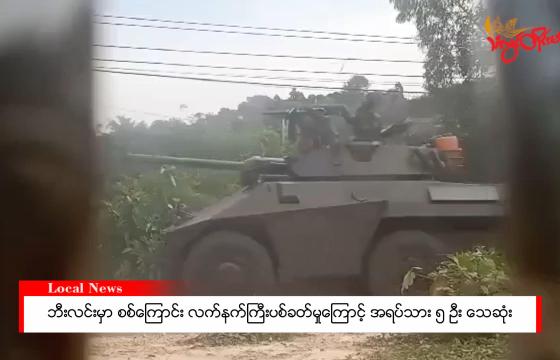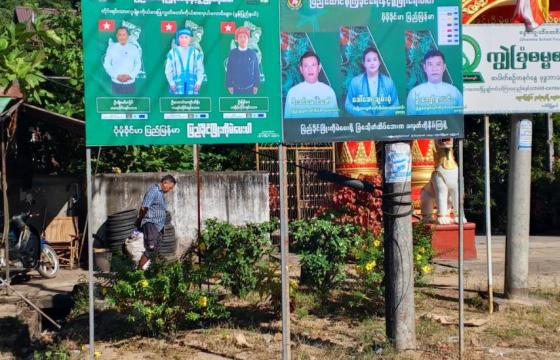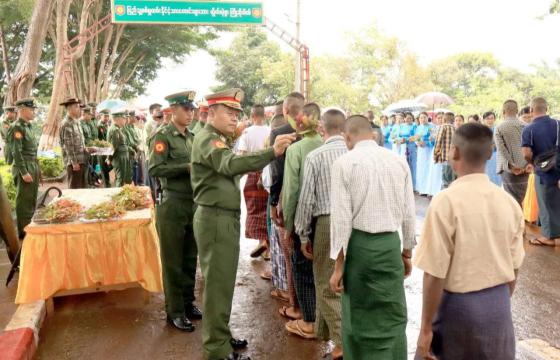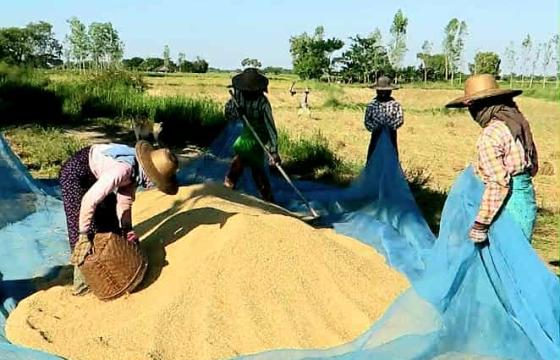Number of Joint Operations PDF- KNLA Increased
The increasing momentum of the Spring Revolution, aimed at overthrowing the coup regime, has resulted in fighting spreading throughout Tanintharyi Region in southern Myanmar, resistance joint forces said.
Since April, conflicts between Junta troops and resistance forces in the Tanintharyi Region have intensified, with resistance groups actively attempting to capture more Junta bases and outposts.
Than Lwin Times' data reveals that armed clashes have intensified in eight out of ten townships in the Tanintharyi Region, except Myeik and Kawthaung. In Tanintharyi, Palaw, Kyunsu, Bokepyin, Dawei, Thayetchaung, Launglon, and Yebyu townships, where the resistance movement is strong, clashes intensified, resulting in the capture of at least seven Junta’s military installations by the resistance forces.
Deputy Commander Ko Min Htet of the Federal Column remarked that with enhanced central command capabilities, stemming from increased cohesion among fragmented resistance factions, they executed more offensives to seize enemy outposts.
"In the early stages of the revolution, there was a lack of unity among resistance factions. Now we have cooperation with other revolutionary forces like the Karen National Liberation Army (KNLA), and People's Defense Force (PDF). The public who have been staunch supporters of the revolution, are also providing more financial aid now. This has boosted our ability to procure weapons. With better armaments, we are now more capable of launching operations to capture enemy bases”, he elaborated.
As conflict in the region intensifies, the Junta is deploying its Air Force, Navy, and Army in efforts to maintain control. There has also been a notable increase in Junta airstrikes targeting civilians.
Following the capture of the Junta's base in Pedet village, Thayetchaung, by resistance forces on May 8, the Junta Air Force conducted airstrikes for two consecutive days, targeting civilians in retaliation. This resulted in the deaths of at least five residents from Kanethiri village, and approximately ten others injured.
On the other hand with the escalation of clashes, frequent disruptions have been observed along certain sections of the Union Highway Road, leading to losses for traders and businessmen. A resident of Launglon reported that some passengers were stranded on the road due to the ongoing fighting.
"As the fighting grew stronger, the whole region faced a lot of problems. All economic and social sectors are suffering, and transportation is halted because roads are closed. Some people traveling from Kawthaung are stuck halfway. The situation with the war along the road is really serious, and people are afraid airstrikes might happen at any moment”, he told Than Lwin Times.
Due to the Junta's indiscriminate airstrikes on civilian areas outside of combat zones, Tanintharyi residents experience panic and heightened insecurity whenever they witness aircraft flying overhead, he added.
With the escalation of resistance warfare, the number of war-displaced people in the Tanintharyi Region surged by thousands, heightening the demand for food and medicine.
FE5 Tanintharyi, a research group, reports that there are at least 50,000 war refugees across
the Tanintharyi Region, with indications that this number may rise further due to recent clashes.






